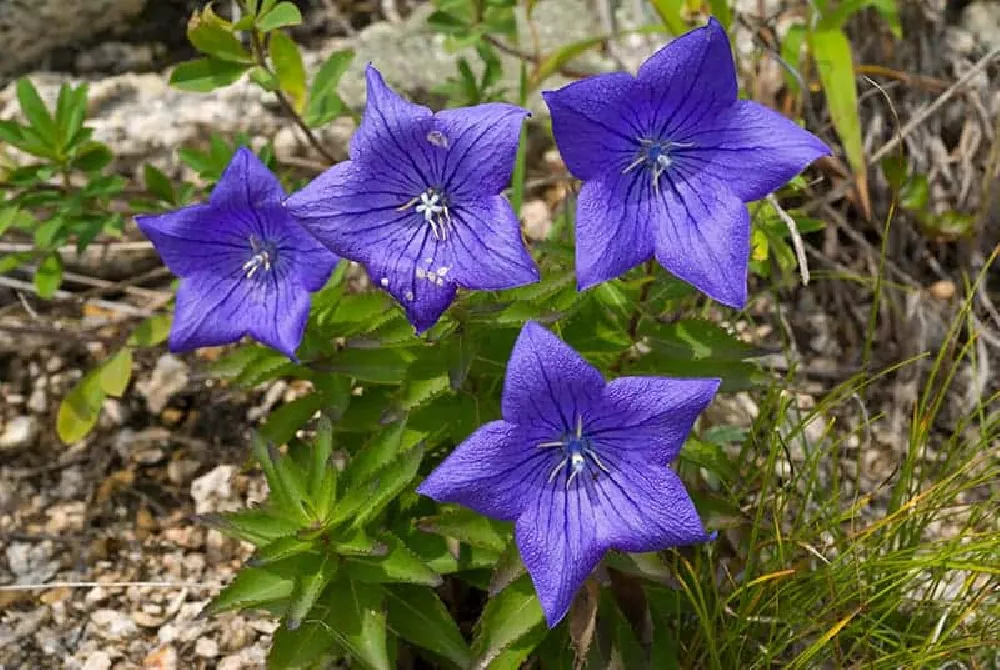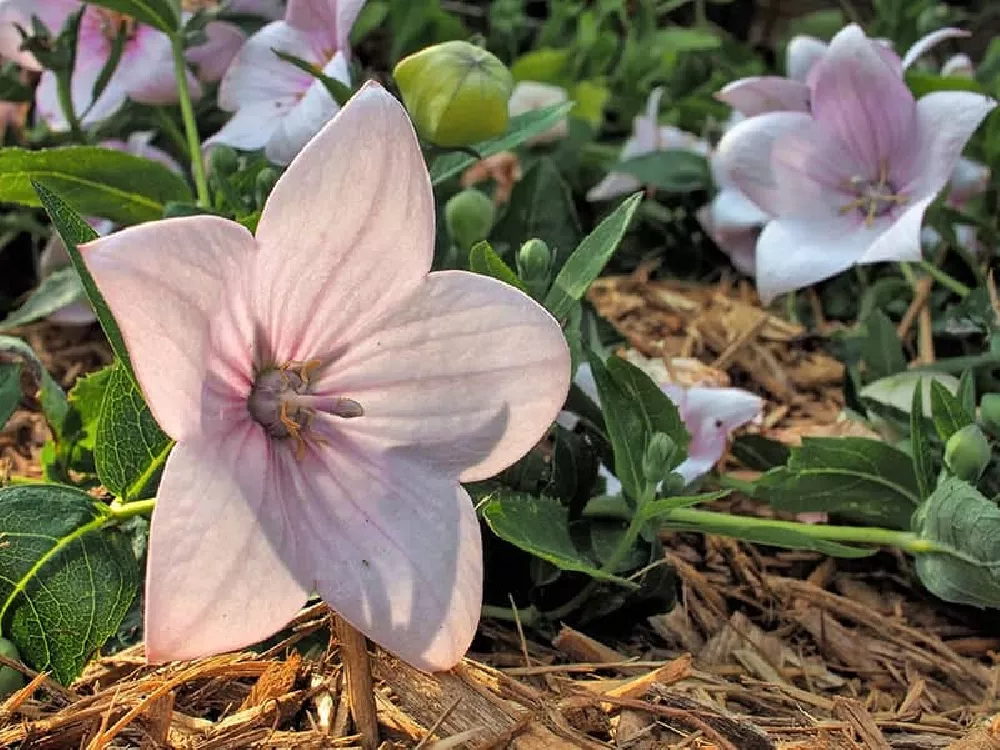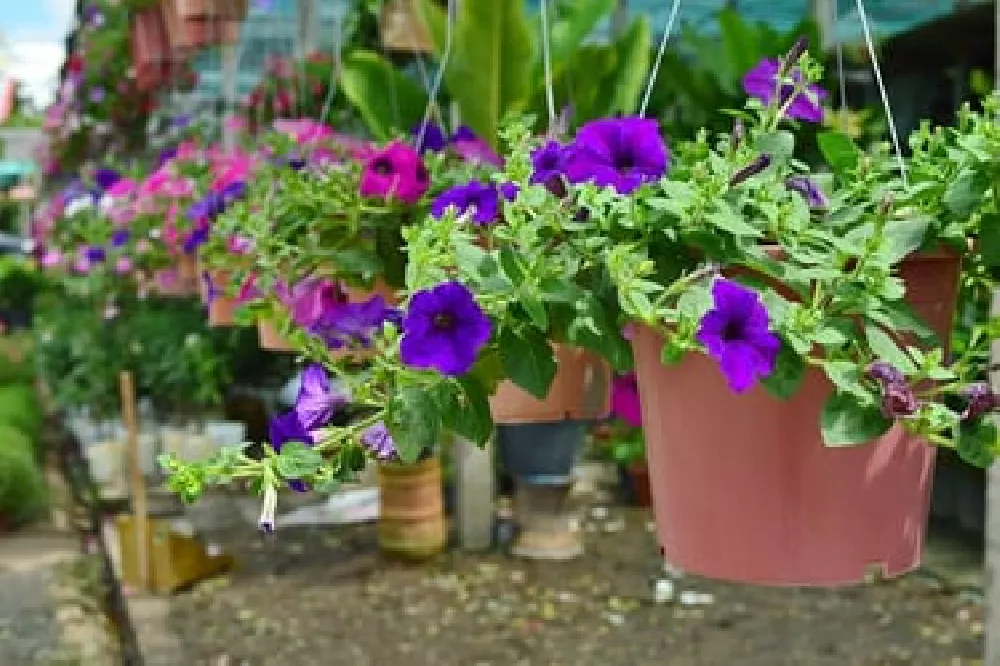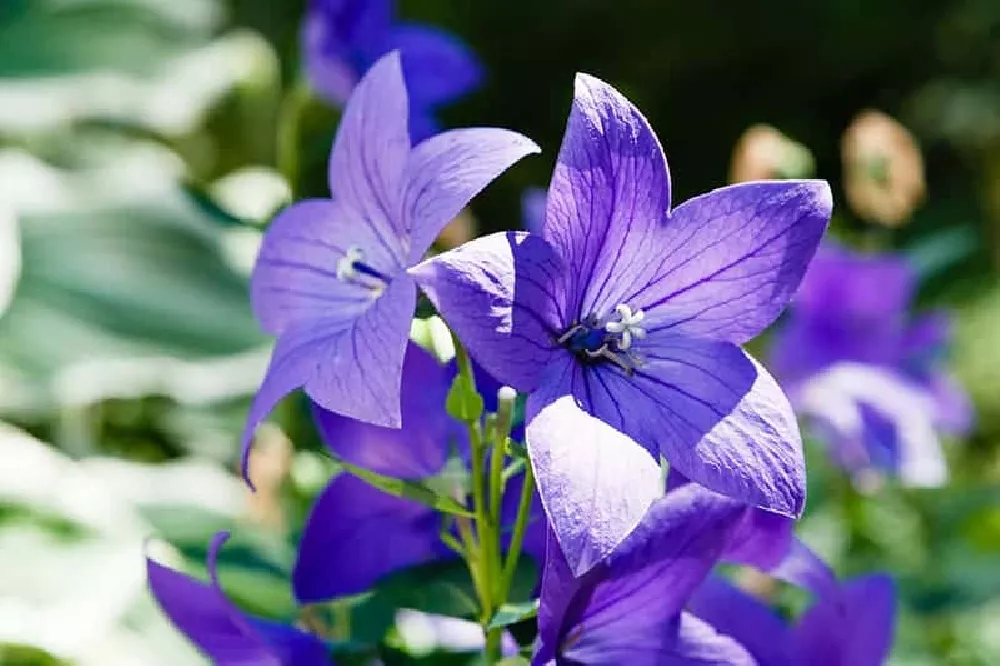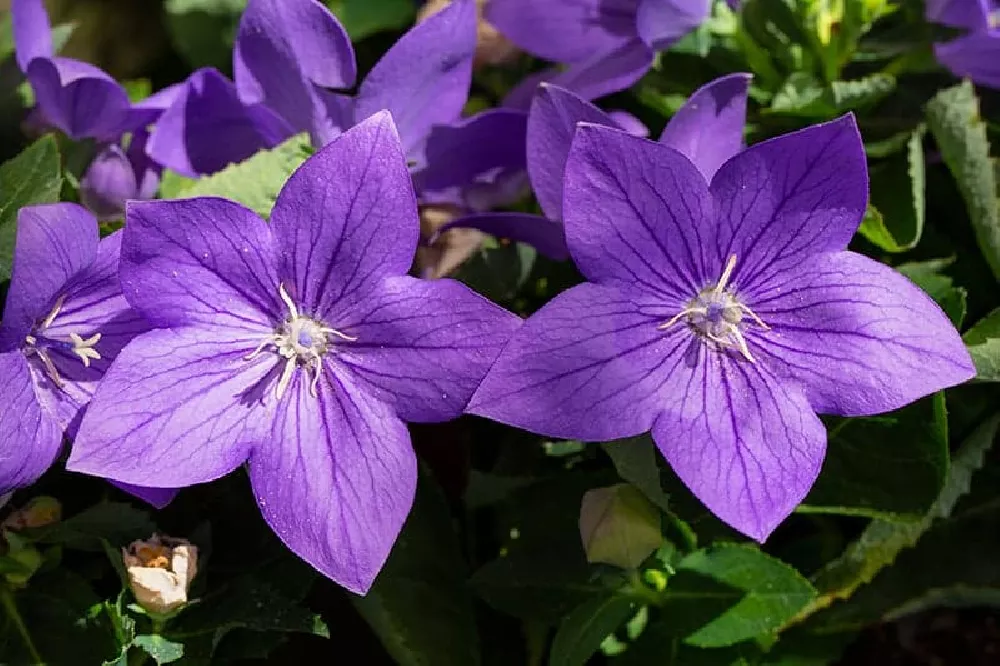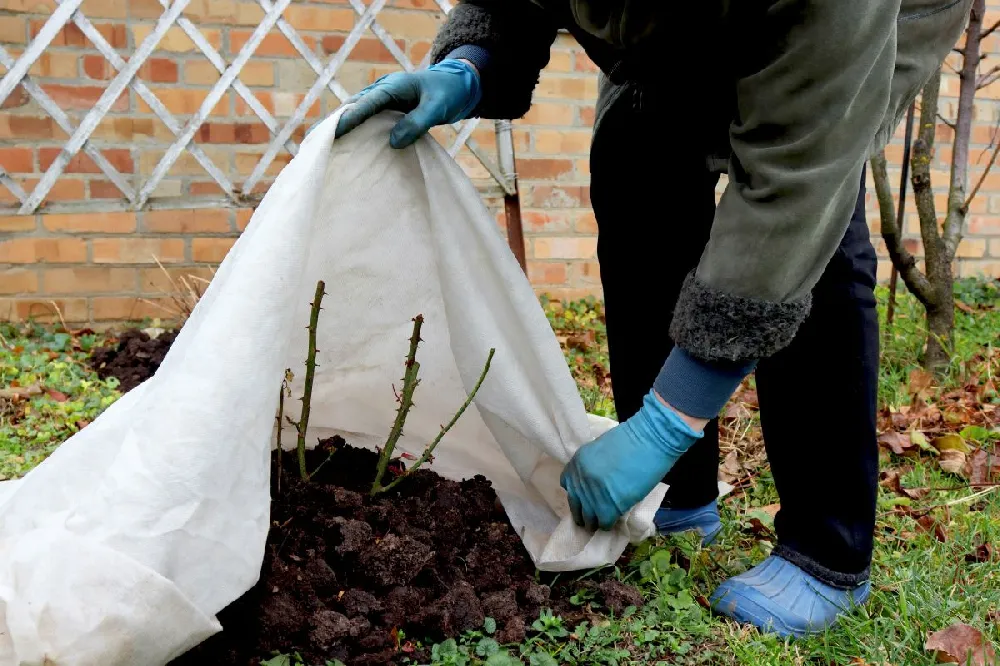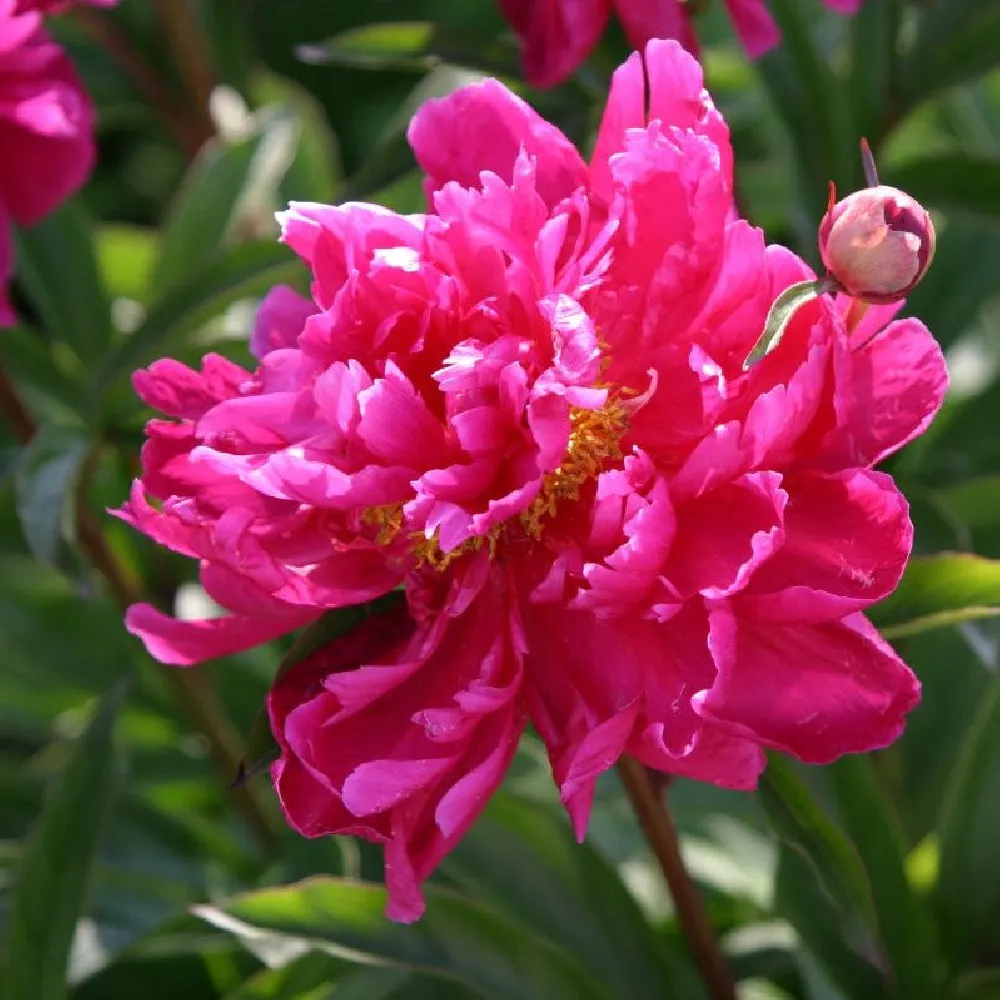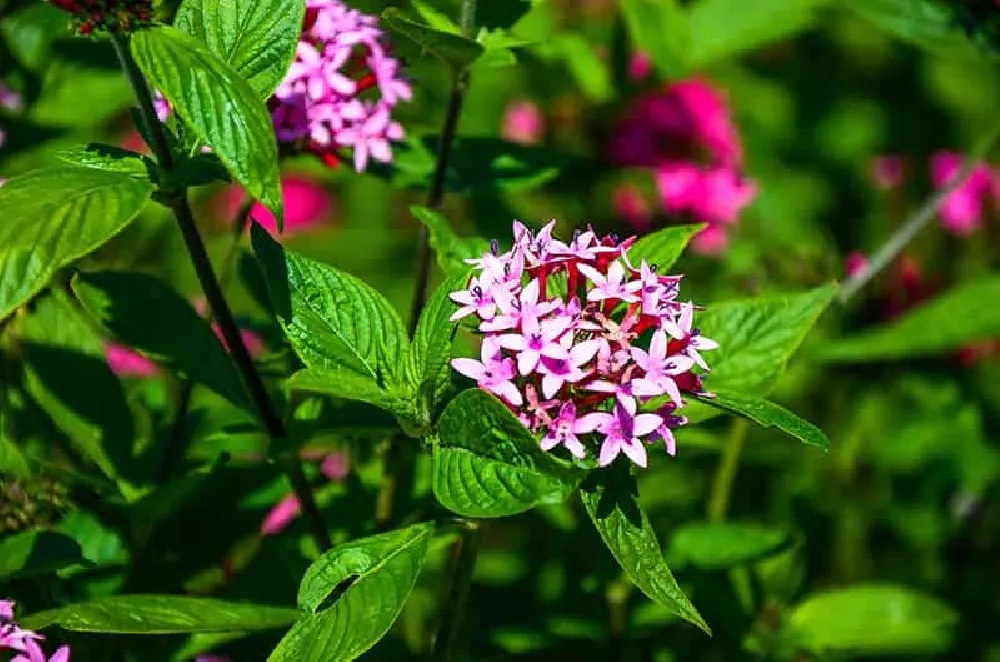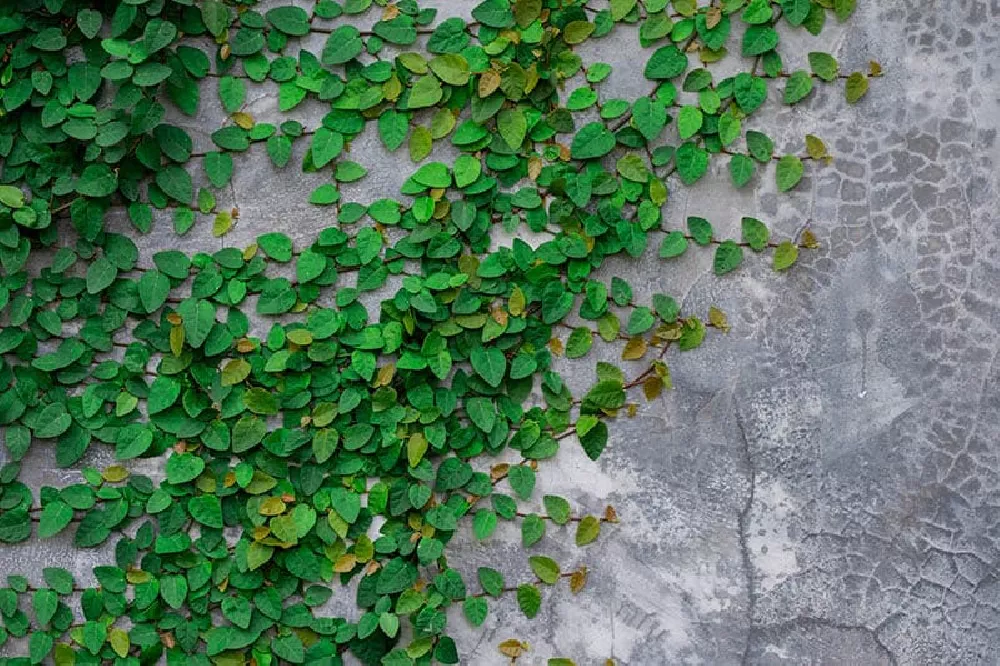- Home >
- Ornamental Plants >
- Balloon Flowers
Balloon Flowers for Sale - Buying & Growing Guide
Plant Care
Sunlight

Six to eight hours of sunlight per day is best, but this plant will also survive with some shade.
Watering
Slightly drought-tolerant, but prefers consistent moisture.
Fertilizing

One seasonal application of all-purpose fertilizer in spring will work.
Platycodon grandiflorus, commonly referred to as balloon flowers and Chinese bellflowers, is an easy-to-grow herbaceous perennial. Unlike other members of the bellflower family, balloon flowers do not resemble bells, instead opening into star-shaped displays. The “balloon” moniker comes from the flower’s tendency to inflate and puff up before bursting open with beauty.
- Color varieties include purple, blue, white, and pink.
- The leaves of P. grandiflorus have a deep blue-green hue.
- The plants grow to be around one foot wide and two feet tall.
Planting and Care
Planting instructions
Balloon flowers can be started indoors four to six weeks before the last frost. Set the seedlings out after the threat of frost has passed. Seeds can also be sowed directly in the garden in early spring. Cover the seeds lightly with soil and keep moist until germination occurs. Thin the seedlings to approximately one foot apart. Balloon flowers are cold hardy in USDA hardiness zones 4-8. The species prefers a soil pH around 6. Coffee grounds can be mixed in to acidify the soil.
Watering and nutrients
Balloon flowers require loose, well-drained soil. They have moderate drought tolerance — always monitor plants growing outdoors to ensure the soil remains consistently moist. If grown indoors, balloon flowers should only require a deep watering once per week. Fertilizing these plants is optional, especially if they are planted in rich, tilthy soil. An application of slow-release fertilizer in the spring can revitalize the plants and promote fresh growth. Otherwise, excessive fertilizer may build up and harm your plants.
Pollination
Balloon flowers will attract bees, their primary pollinators. Balloon flowers are also known to self-pollinate, sometimes referred to as “selfing.” Blooms start as small capsules before inflating into large beach ball-shaped growths. When the balloon-like buds pop, they turn into colorful stars. Balloon flowers usually bloom in the dead of summer, around the month of August in most climates. Unlike some flowers, a balloon flower’s stigma and pollen are accessible to most pollinators, as the flower spreads wide open.
Pruning
Pruning can help control the size of balloon flower plants, as well as increase the number of blooms. Depending on how you cultivate it, balloon plants can range from 6 inches to 3 feet tall. Be sure to clean and sanitize your pruning shears to prevent infection and the transmission of diseases from plant to plant. Cutting and pruning balloon flowers can help strengthen its stems, enabling the plant to grow upright for the rest of the growing season. Make sure to cut across the stems as evenly as possible to encourage new growth after pruning.
Pests and diseases
Slugs and snails may prove to be a problem for your balloon plant, especially in moist conditions. To deter these pests, try setting out a bowl of cheap beer. The gastropods will be attracted to the fermented beverage, causing them to fall in and drown. If drainage is not adequate, your plant may develop root rot. Excessive moisture can also damage the foliage; be sure to prune leaves when necessary to increase air circulation throughout the plant.
Light
Full sun is best for this plant, especially if you want it to produce an abundance of flowers. If you aren’t able to offer the plant a full sun position, then it will settle for partial shade, ideally with several hours of direct sun in the morning.
Temperature
This plant is hardy in zones 3 to 8, and it will thrive in temperatures ranging from 60 to 80 ºF. It can tolerate temperatures exceeding 8 0ºF but will need some protection during the hottest part of the day. If you live in a hot climate, you should position this plant so that it receives morning sun but is sheltered in the afternoon from the intense heat. The afternoon shade will drop the temperature a few degrees and give the plant some relief from the high levels of heat.
Propagation
Balloon flowers grow well from seed and can be sown anytime within the growing season. If you want to get a head start on growing these plants, you can sow the seeds indoors in early spring. Use a tray of moist, well-draining soil and sit the seeds on top, lightly pressing them into the soil. Be careful not to cover the seeds over with soil or press them in too deep, as they need light in order to germinate.
Keep the soil moist but not soggy and sit them in a bright and warm spot. Germination should occur within two weeks. Once seedlings have developed, you can thin them out, moving the strongest among them to slightly larger pots to allow their roots to spread and gain strength. Once the final frost has passed, you can transplant the seedlings outside to their final positions. You will need to take care as balloon flowers have particularly delicate root systems, which, although fleshy, can be very easily damaged. Do not expect all of your seedlings to survive the move, so grow more than you need initially. Alternatively, you can sow seeds directly in the ground during late spring or summer. This will likely result in a higher success rate as the plants won’t need to be transplanted, but they will have less time to grow during the growing season, so it won’t become as large as when started earlier. Balloon flowers typically won’t flower in their first year.
This plant is also fairly successful in self-seeding, so you can benefit from extra balloon flowers for no effort at all. Spent flowers develop into seeds, some of which will be dispersed and settle into the soil where they will grow into new plants. To allow this to happen, you need to refrain from deadheading the flowers as this is where the seeds are. Allow them to naturally drop to the ground when they are ready, and you should see a handful of new balloon flowers emerging next spring.
Flowers
The blooms of this plant are commonly known as balloon flowers because of the way the buds swell up like balloons, and then seemingly burst into starry bell-shaped flowers. Each flower has five points and measures between two and three inches across. The flowers are reliable bloomers and are available in white and various shades of blue and violet. They bloom profusely throughout the summer, sitting on top of tall stems in clusters of flowers, with serrated foliage below.
In the winter, the foliage itself can provide some colorful interest in the garden, with the leaves often fading to shades of purple and red. Some stems may need to be staked to prevent them from falling over when flowering, as stems tend not to be very strong and become more likely to bend over the taller they get. If you are opposed to staking plants, an alternative method would be to clump plants together so that they can support each other. Another option is to prune back stems after the flower, as this will encourage a bushier pattern the following season and prevent stems from becoming so tall (University of Illinois Extension).
The scientific name actually translates to ‘broad bell,’ which is a good description of the flower. ‘Platycodon’ is derived from Greek, with ‘platys’ meaning ‘broad,’ and ‘kodon’ meaning ‘bell.’ ‘Grandiflorus’ literally translates to large flowers.
Toxicity
Some parts of this plant are toxic, namely the roots and the basal leaves. However, some other parts of the plant are edible and can be used in soups or for flavoring (Plants for a Future).
Balloon Flower Varieties
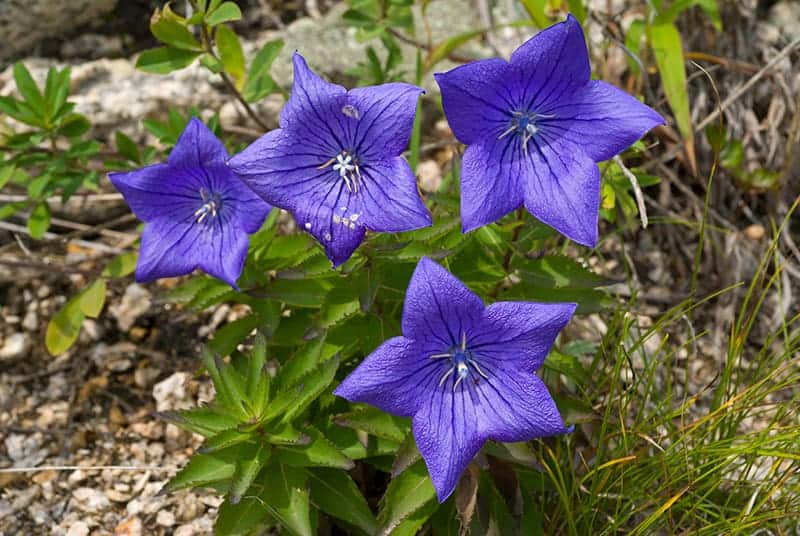
The balloon flower has become incredibly popular in American gardens due to its impressive hardiness, low maintenance needs, and the surprising flowers it produces. There are a whole host of varieties to choose from if you are looking to invest in some balloon flowers, with all of them having plenty to offer the keen gardener.
Sentimental Blue
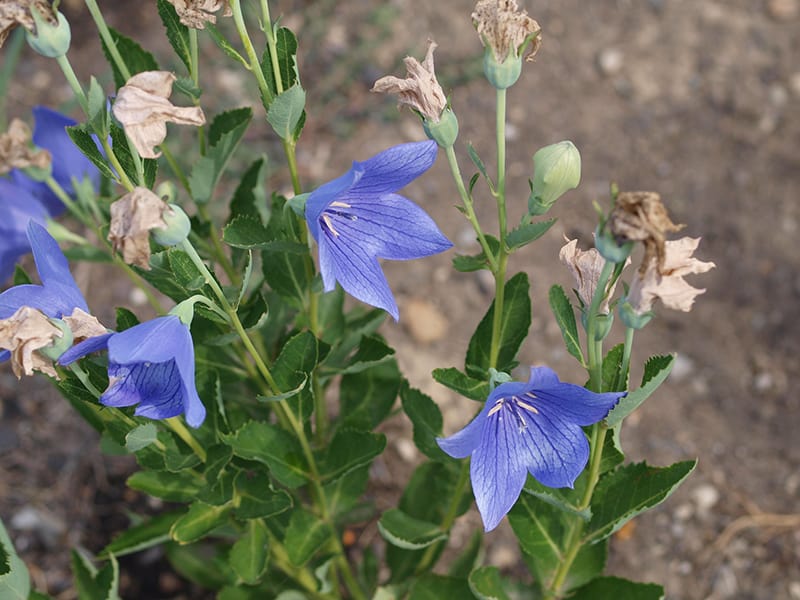
This dwarf variety grows to a maximum of just 8 inches tall, making it perfect for growing in container pots on the patio or as bedding, edging, or a border plant. Its small stature means that unlike many balloon flowers, it won’t need to be staked, yet still produces large, vibrant blue star-shaped flowers of up to three inches in diameter. The stems of this plant emerge from the ground each spring but can be easily disturbed if you forget where they were planted. It’s a good idea to mark them out so that you can leave a clear space for them to arrive each year, as even minor disturbance of this plant can cause it to die. It does not cope well with being moved, and as it is a smaller variety, it would be best grown directly in the container, which will also be its final home.
Astra Pink
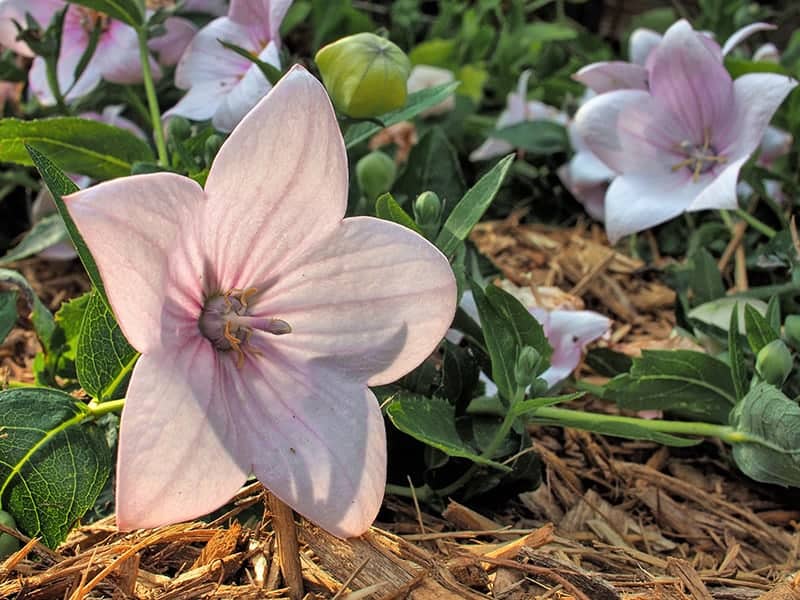
These balloon flowers are another dwarf variety that grows up to 8 inches in height. They work well in containers and also as cut flowers in bouquets. The buds of this variety appear as puffed up white balloons, which transform into star-shaped flared flowers. The flowers are white with subtle striping hints of pink.
Fuji Blue
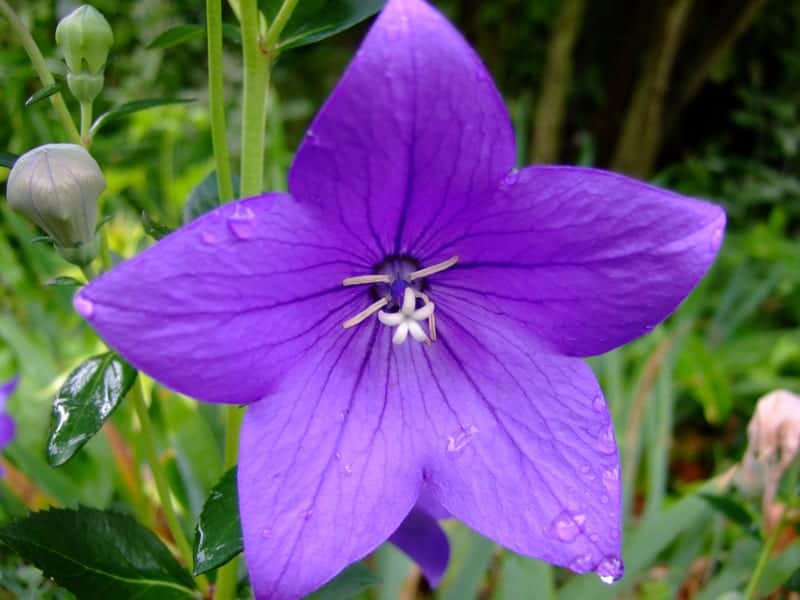
Fuji Blue is a medium variety of balloon flowers. It grows to around 20 inches tall, making it an impressive height but still small enough to not require the stems to be staked. The flowers of this variety are slightly smaller than other balloon flowers, typically measuring two inches across, and appearing in a vibrant shade of blue with some darker blue veining.
Double Blue
This variety of balloon flower features double blooms, with two full layers of star-shaped blue petals. The plant grows to around 24 inches in height and is a variety that may need to be staked when mature. The plant is deer-resistant, mostly disease-resistant, and is not frequently a victim of insect infestations. However, slugs and snails need to be watched out for as these can sometimes cause a problem for the plant.
FAQs
Do balloon flowers spread?
How do you divide balloon flowers?
Balloon flowers can be divided in order to propagate the plant — just keep in mind that this is often extremely difficult, since they tend to only have a single, deep primary taproot. To divide the plant, begin by digging up the root system. Separate the clump into a few individual pieces. Make sure that each division can support itself with several healthy sections of roots. Plant each section and water immediately. Keep the area moist, applying a layer of mulch if necessary, until you see new growth. This will indicate that the roots have taken off and your propagation was successful.
What colors of balloon flower are available?
A variety of balloon flower cultivars are available, emphasizing different flower colors and shapes. ‘Astra double’ is a mini variety, growing less than a foot tall. The small flowers appear to be doubled, as there are 10 petals instead of the usual 5. ‘Astra Pink’ is another mini cultivar, but instead features 5 pink petals on each flower. ‘Fuji Blue’ grows to around two feet tall and produces deep blue flowers. The large size of this variety usually necessitates the use of staking.
How do you winterize balloon flowers?
Balloon flowers perform as a perennial in many climates. In colder areas, you may wish to winterize your plants to ensure they survive until the spring. Once the last flowers have died and the plant begins to recede, you can prune off excess foliage. A heavy layer of mulch is the best defense against cold weather, providing necessary insulation for the hibernating plants. Just be sure to uncover the plants in winter to allow them to sprout again.
